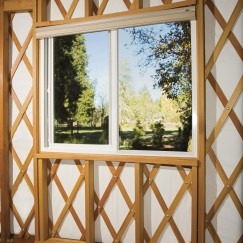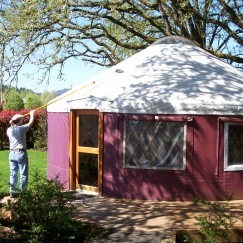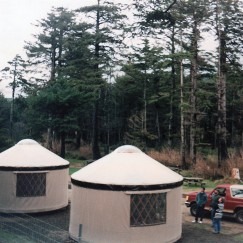The Rise of Yurt Rentals: Tiny Home Dreams to Income

Yurts are turning everyday landowners into profitable hosts overnight. What began as a niche fascination with tiny, alternative living has become one of the most exciting opportunities in the short-term rental market. The Airbnb-style yurt has moved beyond its quirky origins and is now a top choice for travelers looking for unique, nature-immersive, eco-friendly places to stay.
Why Travelers Love Yurts
Travelers have shown consistent interest in stays that feel distinctive and close to nature, and yurts offer that in a straightforward, comfortable way. Their round shape creates an open interior layout, and many manufacturers design them to include features like operable dome skylights and large windows. These elements give guests natural light, views, and a sense of retreat that differs from traditional cabins or hotel rooms. Because many hosts outfit yurts with normal beds, heating or cooling options, and simple furnishings, guests get a “nature stay” without sacrificing basic comfort.
Lower Startup Costs, Higher Flexibility
A major draw for hosts is that yurts generally require lower upfront costs compared to building a conventional small home or cabin. Prices vary widely depending on size, insulation, and custom features, but in many cases a yurt structure itself is less expensive than a permanent building of similar square footage. Yurts are typically considered semi-permanent because they can be assembled and disassembled, and they sit on platforms instead of full foundations. However, the legal requirements differ by region. Some areas require full permitting and inspections, while others allow yurts more easily on rural land. This variability is one reason many hosts start with a single yurt, evaluate the process, and expand only when the regulatory environment and demand make sense.
Meeting the Demand for Eco-Friendly and Off-Grid Experiences
Interest in eco-friendly, low-impact, and nature-centered travel has increased steadily in the short-term rental market. Yurts naturally align with that trend because they use fewer building materials than conventional construction and can operate with relatively simple systems. Some hosts add solar panels, composting toilets, or water-conserving features, but these additions depend on local regulations and the host’s experience level. Even without full off-grid systems, the compact size and minimal environmental disturbance of a yurt appeal to travelers seeking a lighter ecological footprint.
A Lucrative Opportunity in the Modern Hospitality Market
While profitability varies based on location, seasonal demand, amenities, and proper permitting, yurts have proven to be a viable lodging option for many hosts in the short-term rental space. They offer a distinctive guest experience, lower structural costs compared to traditional buildings, and the flexibility to expand or relocate as a host’s business grows. For people interested in creating a unique stay without the commitment of conventional construction, yurts offer a realistic and increasingly popular path.
Earn income and stay flexible.






